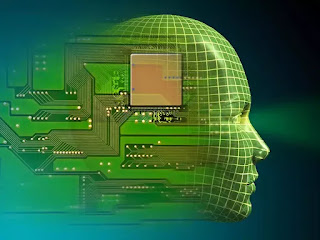Organizers are preparing to host 30-plus teams for an inaugural FIRST Robotics Magnolia Regional Competition in Laurel, Mississippi, on March 15-18, thanks, in large part, to NASA’s Stennis Space Center, a lead sponsor for the event and a driving force in its launch.
Through the competition, NASA Stennis is joining with NASA’s Robotics Alliance Project and co-sponsor Mississippi Power to bring to life all aspects of science, technology, engineering, and mathematics (STEM) in the Magnolia state. It particularly hopes to lead students from rural areas to pursue STEM studies and careers as NASA continues in its mission to inspire the world through discovery. The new regional event is a critical milestone to enhance engagement with robotics programs and the K-12 community across the southeast region of the U.S.
“It is important to be able to model and provide examples to students who geographically do not get exposed to STEM activities,” said NASA Stennis Office of STEM Engagement Director Kelly Martin-Rivers. “If it is something that you do not see around you, it is hard to understand how to get there. One importance of having a robotics regional and setting it in central Mississippi is to provide that access, opportunity, and visibility to an area of students that have not had a strong STEM connection.”
The FIRST (For the Inspiration and Recognition of Science and Technology) Robotics Magnolia Regional Competition is scheduled at the Magnolia Center in Laurel, Mississippi. The event is free, open to the public, and offers students the opportunity to use STEM skills through teamwork and the excitement of competition.
The regional competition will feature two teams from Mexico, along with more than 30 high school teams from states, including Alabama, Louisiana, Mississippi, Missouri, Texas, and Tennessee. It also will serve as a championship-qualifying event to send several teams to the world championship competition in Houston, Texas, in April.
The NASA Stennis workforce is helping to facilitate the Laurel event by providing judges and volunteers throughout the four days of activities. Additionally, nine of the teams scheduled to compete are considered NASA Stennis house teams, which means they have an ongoing relationship with NASA Stennis and a NASA engineer as their team mentor.
This includes five teams from Mississippi: Team Fusion 364 from Gulfport; Chahta Warriors from Choctaw Central; Team Chaos from Picayune Memorial and Pearl River Central; Delta Overload from Gentry High School in Indianola; and Alpha Omega from Our Lady Academy in Bay St. Louis.
Other teams scheduled to compete from Mississippi include: Siege Robotics from Vicksburg; Team Tempest from Biloxi; Team Hero from Petal; Team Storm from Gulfport; and JXN United from Jackson.
High school teams sponsored by NASA Stennis from Louisiana include: Team Combustion from Northshore; The S.S. Prometheus from Mandeville; Tiger Robotics from Slidell; and Power Struck Girls from Academy of Our Lady in Marrero.
Other teams scheduled to compete from Louisiana include: Tigerbots from Boutte; FHS Robodawgs from Covington; Wildcat Robotics from Destrehan; MAGNAtech from West Monroe; Team Phenomena 3616 from Lafayette; Bulabots from Baton Rouge; Voodoo Voltage from New Orleans; Ramageddon Robotics from Lafayette; Denham Venom from Denham Springs; Trinity Force from St. Rose; and SWLA Tech Pirates from Lake Charles.
In FIRST Robotics, high school teams receive identical parts kits and competition guidelines. They use the kits to design and build robots to compete in achieving competition goals. For house teams, NASA Stennis engineers help students prepare for the competition. Students learn engineering and problem-solving skills that can be applied to the competition and real-world situations in the future. The teams each create an identity, raise funds to meet goals, and work to promote STEM in their community.
The 2023 season challenge, “Charged Up” challenges teams to reimagine the future of sustainable energy. The theme calls teams to explore ways to unlock the power of engineering to transform renewable energy and power a better future. For the regional competition, teams will build and program industrial-sized robots to play an action-packed game on a themed field.
The goal is to have the Magnolia Regional expose more students in rural areas to STEM and become an annual FIRST Robotics Competition, much like the Bayou Regional event in Louisiana, which NASA Stennis has supported since its inception. The Bayou Regional is scheduled for March 30-April 1 at the Pontchartrain Center in Kenner, Louisiana.
www.dprg.co.in

.jpg)



